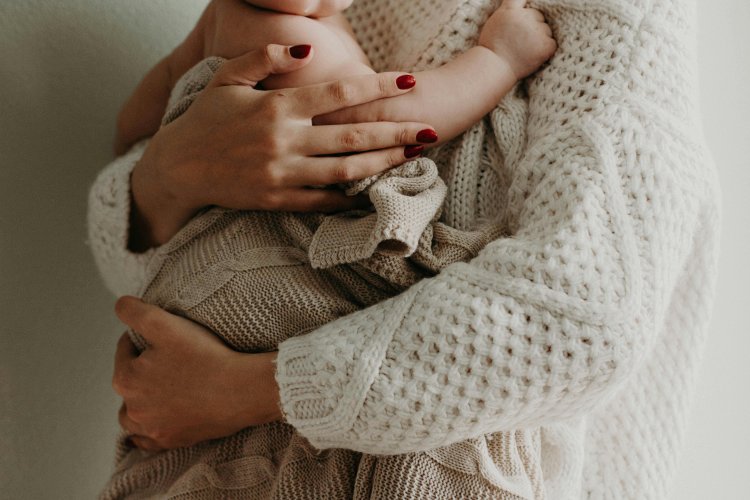Body Language of Unhappy Married Couples - 8 Cues
Here are the challenges and complications in a relationship that are visible in the body language of unhappy married couples.

Happiness in marriage is often reflected and shown in small gestures. Although words can hide genuine emotions, body language can show much about a person. Unhappy married couples exhibit certain non-verbal signs that signify pain, distress, and emotional distance.
This blog will dive deep into symbols and signs of unhappy couples and explore every aspect extensively.
Signs of Unhappy Married Couples

Following are some of the prominent signs that may exhibit couples that are not happy with each other.
1. Lack of Physical Warmth
Lack of Physical Affection is one of the most expressive signs of an unhappy marriage. Physical touch, which includes holding hands, hugging, or kissing, is an important aspect of expressing love and intimacy in a relationship. When a couple starts distancing themselves from each other, it shows a gap between them and their relationship.
2. Lowering Touch
In happy marriages, couples often touch each other spontaneously. They might hold hands while walking, touch each other’s arms during conversations, or sit close to one another. In contrast, unhappy couples show a noticeable lack of these gestures. They may avoid physical contact, which can signify discomfort.
3. Rigid Behavior
When there is physical touch, body language might indicate discomfort. When touched, an unhappy partner may become stiff or rigid, indicating a lack of warmth and affection. When physical touch would often be comforting, such as during a discussion about a tough topic, this response shows a lot about a person.
4. Negative Facial Expressions
Facial expressions are a strong indicator of underlying emotions. Negative facial expressions are the common way of showing dissatisfaction and displeasure in unhappy married couples.

5. Frequently frowning
A creased brow or frequent frowning might be signs of ongoing tension or unhappiness. These expressions, especially when spoken to one's spouse, signify that the speaker is dissatisfied or disappointed with their marriage.
6. Lack of Smile
Another indicator of an unhappy marriage is a notable absence of smiles. It is human nature to smile when one is happy or feels loved. When couples rarely smile as each other, shows that there's something lacking and missing in their relationship.
7. Eye-rolling
One particularly harmful non-verbal signal is rolling one's eyes. It sends a message of disrespect, which is harmful to any relationship. When someone often rolls their eyes during discussions or arguments, there has been a serious breakdown in mutual respect and communication.
8. Avoid Eye Contact:
Making eye contact is essential to personal conversation. It encourages trust and respect. In a married couple, avoiding eye contact can be a big indication of breakdown in their relationship. It shows lack of interest from both partners in interaction.
Unhappy couples may often look away, even when they make eye contact. This indicates that the partners are not interested to participate completely in the discussion. It is also a sign of insecurity or to keep genuine emotions hidden.
Signs of Stress
One typical element of marital conflict is stress. Couples who are unhappy frequently show signs of stress, which can worsen their relationship.
1. Stiff Muscles
Stress is evident in tense muscles, especially in the face, neck, and shoulders. A partner may be suffering chronic tension or worry relating to their relationship if they express tense behavior on a regular basis.
2. Fidgeting
Another indication of tension and discomfort is fidgeting. An unhappy partner may exhibit shivering in their hands and feet, or they may toy with things or tap their fingers. These behaviors show discomfort and a lack of relaxation while their partner is around.

3. Physical Distancing from each other
When a couple is in a happy relationship, they frequently want to be closer to one another physically by doing things like sitting next to one other or holding hands. These acts of affection are avoided by unhappy couples to lessen affection and connection.
One possible indication is the way people choose to place themselves during talks, such as by sitting or standing wider apart. A need for emotional space and a refusal to interact intimately are suggested by an increase in the physical distance between the two parties.
4. Way of Talking:
The way couples interact with each other reveals a lot about their relationship. Unhappy married couples often interact uninterestedly with each other that shows complications in their relationship.
5. Tone
While interacting with someone, tone is very important to take care of. It shows how you feel about the person you talk to. A voice that is flat gives the impression that the person is not interested nor involved in the discussion when they talk in a tone that is flat and uninterested.
6. Posture
In addition, the main element that exists in the marriage is expressed through the body language of the couple. Body language plays a huge part in telling who feels more in control and who feels less powerful, such as leaning forward forcefully, taking up a lot of space, and standing tall with hands on hips.
On the other hand, dependent body language conveys feelings of inferiority and lack of confidence, like avoiding eye contact, always being one step before your partner, and keeping your head down and voice lower.
Conclusion
Couples can address underlying issues and work toward rebuilding their relationship by recognizing signs of marital distress early on. By observing body language and non-verbal communication, partners may encourage a deeper understanding of each other's needs and emotions, leading to a healthier and more fulfilling marriage. As a result of these nonverbal cues, one partner may feel dominant in a relationship while another may feel submissive and dependent.
Share
What's Your Reaction?
 Like
0
Like
0
 Dislike
0
Dislike
0
 Love
0
Love
0
 Funny
0
Funny
0
 Angry
0
Angry
0
 Sad
0
Sad
0
 Wow
0
Wow
0















